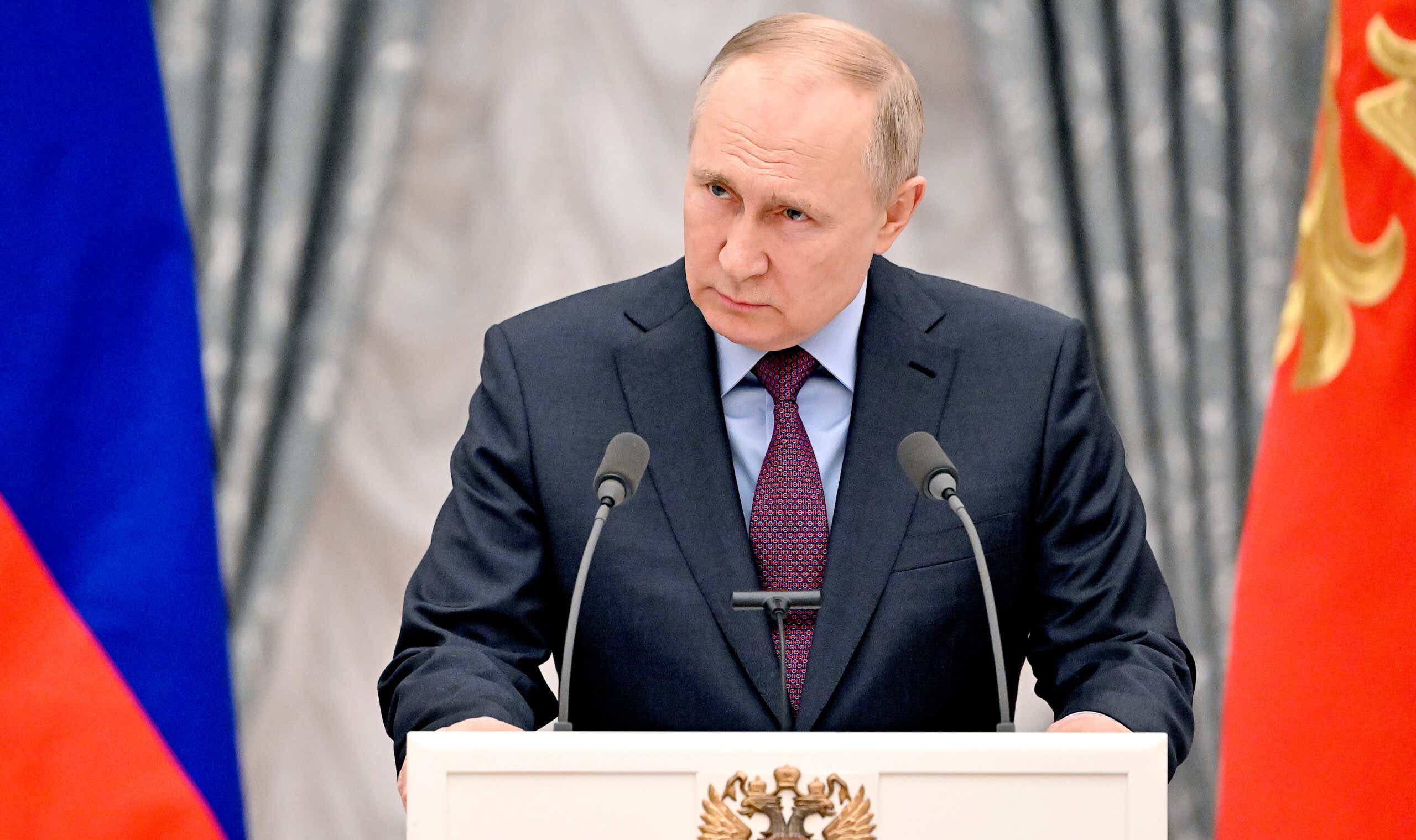Last weekend, gymnast Ivan Kuliak wore the letter “Z” on the podium as he collected his bronze medal at the Apparatus World Cup in Doha. Unable to wear the Russian flag — it was already banned by the International Gymnastics Federation — the 20-year-old taped the letter onto his chest before standing for the national anthems. He was standing next to his Ukrainian rival Illia Kovtun, who won gold.
Kuliak is now under investigation by the International Gymnastics Federation (FIG), who say they will open disciplinary proceedings.
“The International Gymnastics Federation confirms that it will ask the Gymnastics Ethics Foundation to open disciplinary proceedings against Kuliak following his shocking behaviour at the Apparatus World Cup,” the FIG said in a statement.
“The FIG adopted further measures against Russia and Belarus on 4 March. From 7 March, 2022, Russian and Belarusian athletes and officials, including judges, are not allowed to take part in FIG competitions or FIG-sanctioned competitions.”
The world’s attention was hereby drawn to this mysterious — but increasingly visible — symbol of Russian allegiance. But how did it come into existence?
Where is ‘Z’ being spotted?
It’s all over Russian vehicles in Ukraine. As they assembled along the border earlier this year, observers noticed the letter V, the letter Z inside a box, and standalone “Z”s painted on the sides of tanks and trucks.
“Z” has also become a totem for those supporting the war at home, appearing on the state-run RT television network, and popping up in online videos. Per the New York Times, one of these showed what appeared to be a youth flash mob in a hall, wearing black T-shirts marked with a Z and dancing in a sea of Russian flags.
More famous faces are featured in these recordings too. According to The Economist, Maria Butina, a Russian spy who was deported from the U.S. in 2019 and is now a member of the Russian State Duma (Parliament), filmed herself drawing Z on her coat days after the Russians attacked Ukraine. “Keep it up, brothers,” she proclaimed. “We’re with you forever.”
In the central Russian city of Kazan, several dozen children and staff at a hospice were pictured standing in front of their building, forming a giant “Z” in the snow.
As the New York Times notes, Russian companies that use the letter “Z” in their logos have adapted the design of the letter to make it stand out. The governor of Kemerovo in Siberia, unofficially known as “Kuzbass,” declared that its name would hereafter be written as a Cyrillic-Latin mix, “КуZбасс.”
Who’s behind it — and what does ‘Z’ stand for?
We don’t know for certain, but there are some very well-informed theories. The most widely accepted is that the “Z” acts as an identifier of the Russian military in Ukraine — but there’s more to it.
Per the BBC, it was believed at first that “Z” actually denoted the number “2,” in commemoration of February 22 (2/22/2022). On that date, Russia ratified treaties of “friendship, cooperation and mutual assistance” with Donetsk and Luhansk, self-affirmed breakaway regions in eastern Ukraine. It was rightly interpreted as a signal of impending hostility against independent Ukraine, and just two days later, Russia invaded.
“Z’ is written differently in the Russian Cyrillic alphabet and looks like a “3,” but most Russians recognize Latin letters. Some observers of the Russian military line speculated that the “Z” might denote the Ukrainian President Volodymyr Zelensky, who’s believed to be a key target. Others thought that it might refer to “zapad,” which is the Russian word for “west” — and the direction troops were marching.
Military analysts suspect according to The Economist that the letters correspond to sections of the invading Russian army, some of which bear “Z”s, while others display “V”s and “Z”s inside a square. The BBC reports that the Orthodox Christian pro-Putin website Tsargrad wrote that the insignia helped the army to “avoid friendly fire” and couldn’t be “mixed up with anything else.” In an interview with the Task and Purpose website, U.S. Air Force Lt Col Tyson Wetzel agreed that the “Z”s are a “de-confliction measure to help prevent fratricide.”
The unusual proliferation of the “Z” symbol on home turf however also points to an orchestrated Kremlin effort to muster support for the war. Its accompanying hashtag, “We don’t abandon our own” harkens back to previous Russian conflicts.
“This is definitely a state-induced meme,” Vasily Gatov, a Russian-American media analyst told the New York Times. “There are always people receptive to this kind of message.” He added that a small army of propagandists was being paid to spread the meme on social media, to artificially inflate its popularity. Far sharper than the rounded Cyrillic “Z,” it would certainly make an apt tag for a regime hoping to stoke fear and respect.
“Often with propaganda, the simplest things catch on the quickest,” Aglaya Snetkova, a lecturer in international politics at UCL, told the BBC. “It looks rather intimidating and quite stark. From an aesthetic perspective, it’s a very powerful symbol.”









